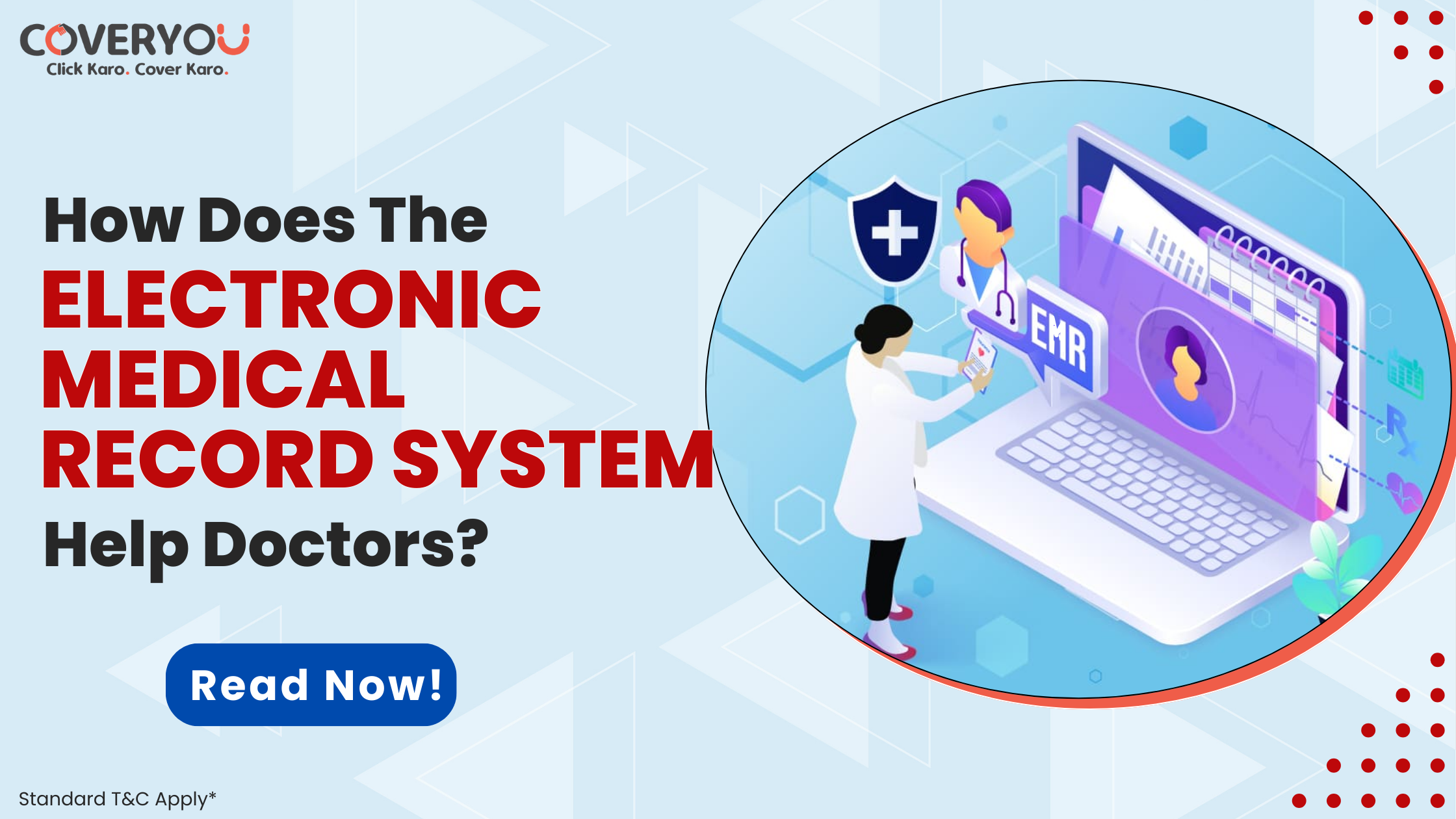Electronic Medical Records (EMR) have transformed the way doctors manage patient information and streamline their clinical workflows. Traditionally, patient records were kept in paper files, which made retrieving, updating, and sharing information time-consuming and prone to errors. However, with the advent of EMRs, healthcare providers now have a digital, efficient, and secure way to store and access patient data. EMRs are not just replacements for paper records, they are comprehensive digital tools that include everything from a patient’s medical history and lab results to prescriptions, diagnostic information, and doctors’ notes. The ability to store this data electronically enhances patient care, facilitates communication among healthcare staff, and simplifies administrative tasks.
How EMRs are transforming healthcare practices:
-
Streamlined Workflow and Efficiency:
One of the most significant benefits of EMR systems are that they save doctors time by streamlining workflow. Traditional paper records can be burdensome to manage, but EMRs allow easy input, storage, and retrieval of patient information. Doctors can quickly access patient data, update records, and share information with other healthcare professionals without flipping through multiple files. This efficiency enables doctors to spend more time focusing on patient care rather than paperwork.
-
Enhanced Diagnostics and Treatment:
EMRs assist doctors in diagnosing and treating patients more effectively. Digital records allow healthcare providers to view complete patient histories, including past diagnoses, treatments, lab results, and prescriptions. This comprehensive view helps doctors make informed decisions, leading to more accurate diagnoses and personalized treatment plans. Additionally, EMR systems can flag potential issues, such as medication conflicts, helping to prevent harmful drug interactions.
-
Improved Patient Safety:
Electronic Medical Records are equipped with features that enhance patient safety. For example, e-prescription software integrated into EMR systems can detect possible conflicts between prescribed medications, alerting doctors to potential risks. This ensures that doctors are aware of any adverse interactions, helping to prevent medication errors. The system also reduces the likelihood of misreading handwritten prescriptions, further enhancing patient safety.
-
Convenient Access to Patient Data:
EMRs provide healthcare providers with easy, round-the-clock access to patient information. Since the data is stored digitally and often on cloud-based platforms, doctors can view patient records from any device with internet access. This flexibility is particularly helpful during emergencies, when a quick review of patient history can be crucial for providing timely and appropriate care.
-
Scheduling and Administrative Efficiency:
EMR systems come with integrated scheduling tools that streamline appointment bookings and administrative tasks. Doctors and clinic staff can use these features to manage patient appointments, send reminders, and coordinate tests and follow-ups. This reduces missed appointments and ensures that patients receive timely care. The scheduling function is especially beneficial for managing patients who require regular check-ups, such as those with chronic conditions.
-
Better Coordination among Healthcare Providers:
EMRs improve communication and collaboration among healthcare providers. Doctors, nurses, and other staff members can access the same patient records, ensuring everyone has up-to-date information. This reduces the chances of miscommunication and ensures that patients receive consistent care. Additionally, doctors can easily share patient data with specialists, enabling seamless referrals and coordinated treatment plans.
-
Customization and Scalability:
A key feature of EMR systems is the ability to customize templates and functionalities according to the specific needs of the clinic or hospital. Doctors can set up the EMR to include templates that fit their specialty, making it easier to document patient information quickly and accurately. As the practice grows, EMR systems can be scaled to accommodate more patients and additional services, making them a long-term solution for healthcare facilities.
-
Enhanced Patient Engagement:
EMRs play a role in improving patient engagement by allowing patients to access their own medical records. Patients can view their lab results, treatment plans, and medication schedules, which help them stay informed about their health. EMR systems also send automated reminders for tests, check-ups, and medication refills, ensuring patients adhere to their treatment plans. This promotes a proactive approach to health management and strengthens the patient-doctor relationship.
-
Better Data Security and Privacy:
With EMRs, patient data is stored securely, ensuring that sensitive information is protected from unauthorized access. Unlike paper records that can be easily lost or damaged, digital records are encrypted and backed up regularly. This ensures that patient privacy is maintained, and the risk of data breaches is minimized. EMR systems comply with regulations such as HIPAA (Health Insurance Portability and Accountability Act), giving both doctors and patients peace of mind.
Government Initiatives to Promote Electronic Medical Records (EMR)
The government’s focus on digital healthcare is driving significant growth in the EMR market in India. By promoting and supporting the adoption of EMRs through various initiatives, India is moving towards a more efficient, accessible, and high-quality healthcare system.
The Indian government has several initiatives to promote the use of electronic medical records (EMR) in the healthcare system, including:
-
National Digital Health Mission (NDHM):
The NDHM aims to establish a robust digital healthcare ecosystem across India. It focuses on creating a national digital health infrastructure that includes essential components such as health registries, electronic health records, and unique health IDs for individuals. Through this mission, the government seeks to ensure seamless access and exchange of health information, enabling healthcare providers to deliver better, more personalized care. The NDHM also prioritizes the interoperability of health data, which means that information can be shared across systems and providers, improving the overall efficiency of the healthcare system.
-
Ayushman Bharat Digital Mission (ABDM):
The ABDM is an extension of the Ayushman Bharat initiative, which aims to transform India’s healthcare sector by encouraging the adoption of digital technologies. One of the core objectives of ABDM is to incentivize healthcare facilities to digitize health records and link them to a national health system. By doing so, the government seeks to create a network where patient information is easily accessible and securely shared between healthcare providers. This initiative plays a crucial role in improving care coordination, reducing paperwork, and enhancing patient outcomes.
-
National Health Stack (NHS):
The National Health Stack is a comprehensive digital framework designed to support India’s healthcare system. It provides the infrastructure needed for digital healthcare solutions, including a modular, scalable, and interoperable digital health architecture. The NHS aims to address various aspects of healthcare, such as data management, claims processing, and digital registries. By digitalizing these processes, the NHS helps reduce administrative burdens and streamline healthcare delivery, making it easier for providers to focus on patient care.
-
Central Sector Scheme for Extra Mural Research (EMR):
This scheme supports research in priority healthcare areas, based on disease burden and the need for technological advancements. It encourages innovation and development of new digital health solutions, including EMR systems, which can address specific health challenges in India. By funding research initiatives, the government aims to foster an environment where technology-driven healthcare can thrive, leading to improved patient care and treatment outcomes.
Conclusion
Electronic Medical Records (EMRs) are more than just digital files; they are essential tools that enhance the way doctors manage patient care. From improving diagnostics to streamlining administrative tasks, EMRs provide numerous benefits that lead to better healthcare outcomes. By adopting EMR systems, clinics and hospitals can improve efficiency, accuracy, and patient safety, ultimately enhancing the quality of care provided. For doctors looking to optimize their practice, investing in a robust EMR system is a step in the right direction.
















